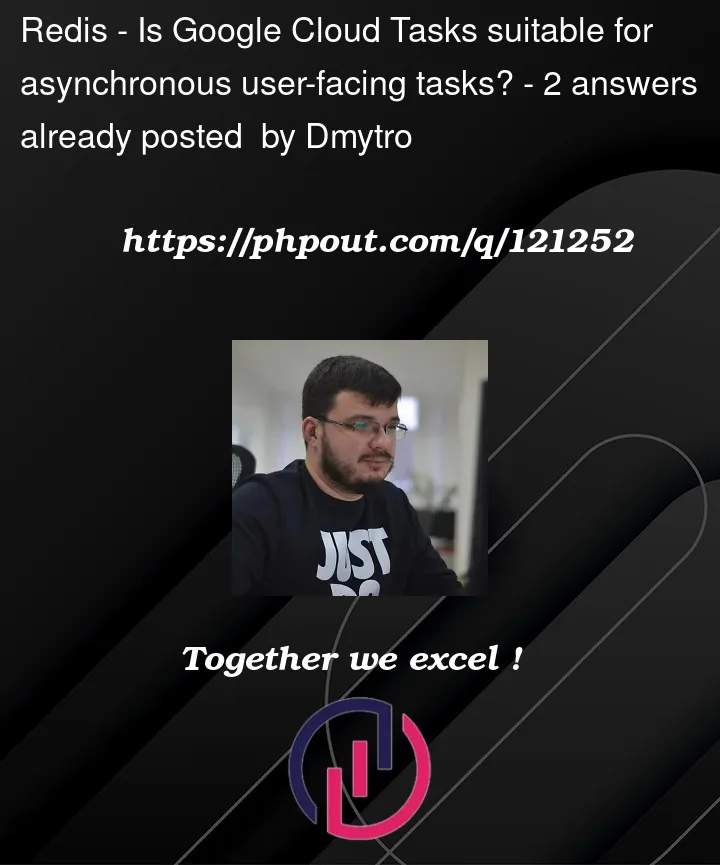Suppose we have a web-service written in python, that does some time-consuming file processing. It definitely should not be run inside the HTTP handler as it takes up to 10 mins to complete. Instead, the processing should be done asynchronously by some sort of workers, and it would be also nice to report the progress of the task execution to display to the user.
Would it be a good idea to setup Google Cloud Tasks with some Cloud Run or Cloud Functions service as a HTTP target to do this work?
Is Google Cloud Tasks suitable for handling this type of async tasks, where the user is sitting and waiting for result?
If not, is there any other options to achieve this with Google Cloud? (or should I use custom task services for this purpose, for instance, celery and redis) It also seems that Cloud Run Jobs features somewhat similar functionality, but there are not any queue systems to manage workers.




2
Answers
GCP can handle Asynchronous tasks, Asynchronous execution is a well-established way to reduce request latency and make your application more responsive.
We can use cloud run or cloud functions for this type of tasks , Because we can increase the time limit upto 30 min in http task handlers in GCP cloud tasks.
For more information refer to this document.
We use Google Cloud tasks to implement long running processes that report their progress via data store records. Some of these processes run longer than the standard 10 minute timeout, and trigger a new cloud task to complete the processing.
GC tasks is simply a tool for queuing tasks. It is a useful tool for ensuring that tasks do run, as it has built in retry mechanisms. How you use that in the context of an application depends on a lot of other detail of the application itself, but it is definitely possible to use it for background/asynchronous processing of tasks.
We use Google Cloud tasks to implement long running processes that report their progress via data store records. Some of these processes run longer than the standard 10 minute timeout, and trigger a new cloud task to complete the processing. We then have a simple lightweight handler that retrieves the status record from data store and reports that to the user. We poll that handler from the client, but you could also implement something like websockets.